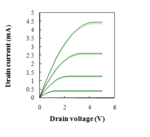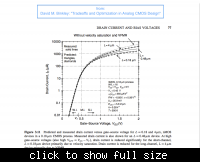shabazsyed
Junior Member level 3
Hello Guys ,
I am trying to verify my Hand Calculations and Spice Results. But the simulated results are less than Calculated. Its TSMC .35um Tech.
Spice Code.
***8
vdg vds 0 dc 5
vff vgs 0 dc 5
vdum vds b dc 0
mn1 b vgs 0 0 nmos w=1u l=.4u
.include moslh.md
.dc vdg 0 5 .00005 vff 1 5 1
.control
reset
run
plot i(vdum)
.endc
.end

My Calculated Results

Simulated Results.
Y is Calculated Result differing From Spice Results?
Any Suggestions.
Eagerly Waiting For Some replies.
Thanx
I am trying to verify my Hand Calculations and Spice Results. But the simulated results are less than Calculated. Its TSMC .35um Tech.
Spice Code.
***8
vdg vds 0 dc 5
vff vgs 0 dc 5
vdum vds b dc 0
mn1 b vgs 0 0 nmos w=1u l=.4u
.include moslh.md
.dc vdg 0 5 .00005 vff 1 5 1
.control
reset
run
plot i(vdum)
.endc
.end

My Calculated Results

Simulated Results.
Y is Calculated Result differing From Spice Results?
Any Suggestions.
Eagerly Waiting For Some replies.
Thanx


